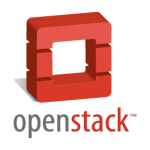OpenStack Pike TripleO Undercloud and Overcloud Deployment on 3 Bare Metal Servers

Nowadays Packstack based OpenStack installations are used for proof-of-concept and demonstration purposes only. The official RDO community points TripleO (OpenStack On OpenStack) as a recommended OpenStack deployment method for production cloud. TripleO is an automated installation tool, based on Ironic OpenStack node provisioning software, intended for deployments on bare metal servers, that is, on physical hardware. TripleO generally requires using servers equipped with BMC (Baseboard Management Controller) or IPMI (Intelligent Platform Management Interface) modules, like HPE iLO (integrated Lights Out) in order to be able to manage and controll servers during OpenStack deployment, maintenance and node introspection procedures.
Read More
